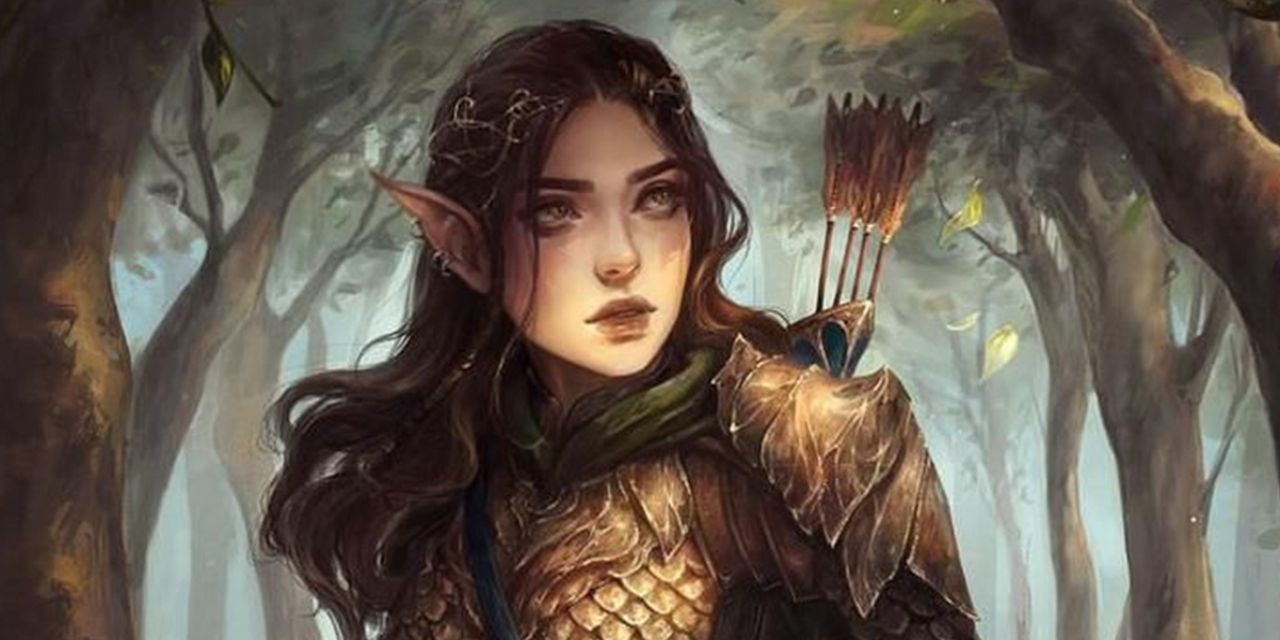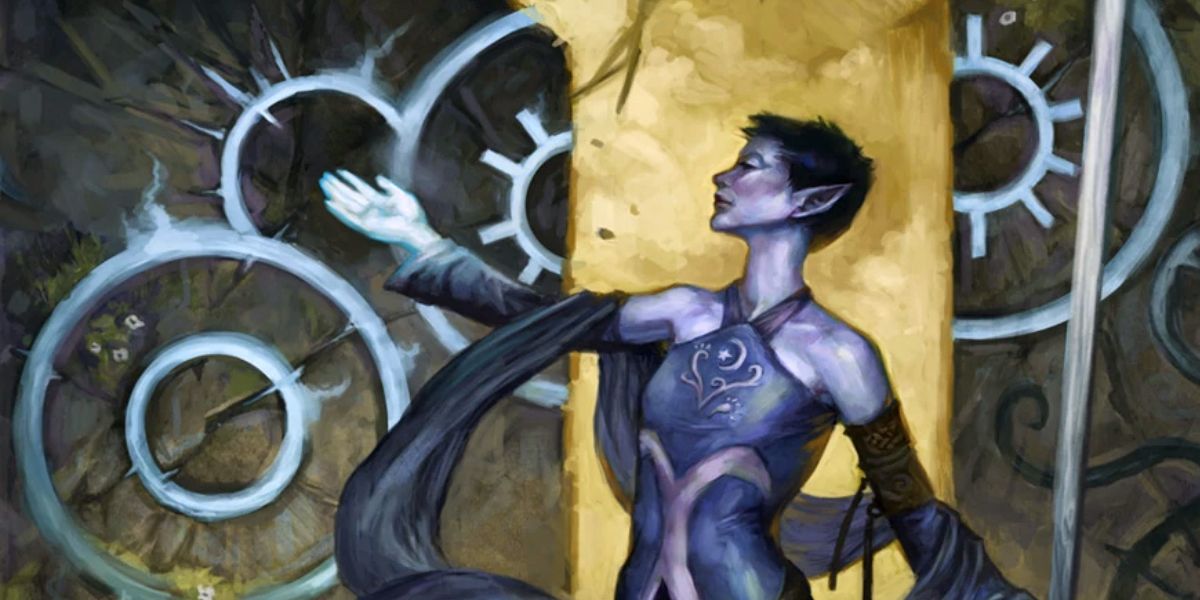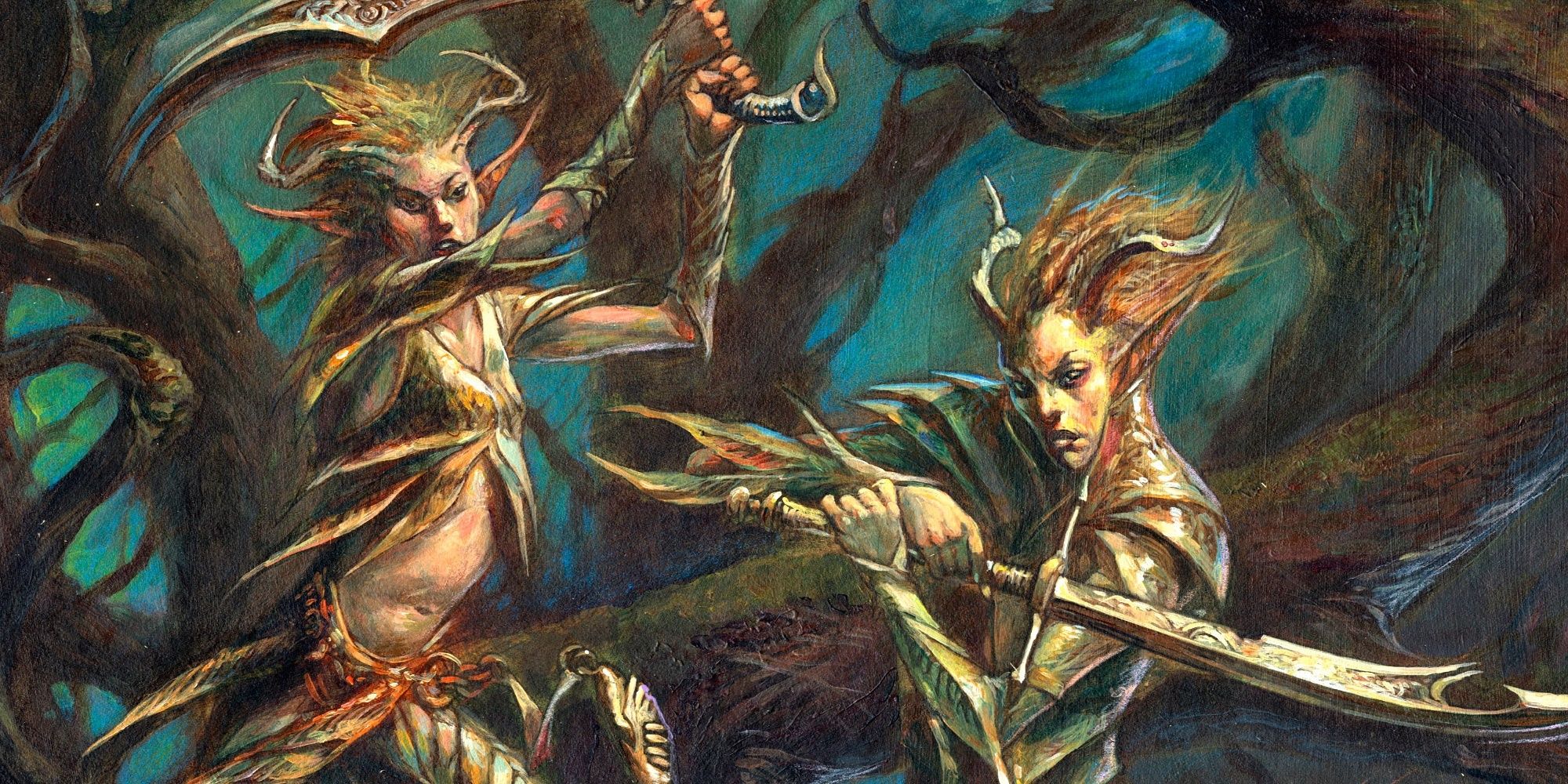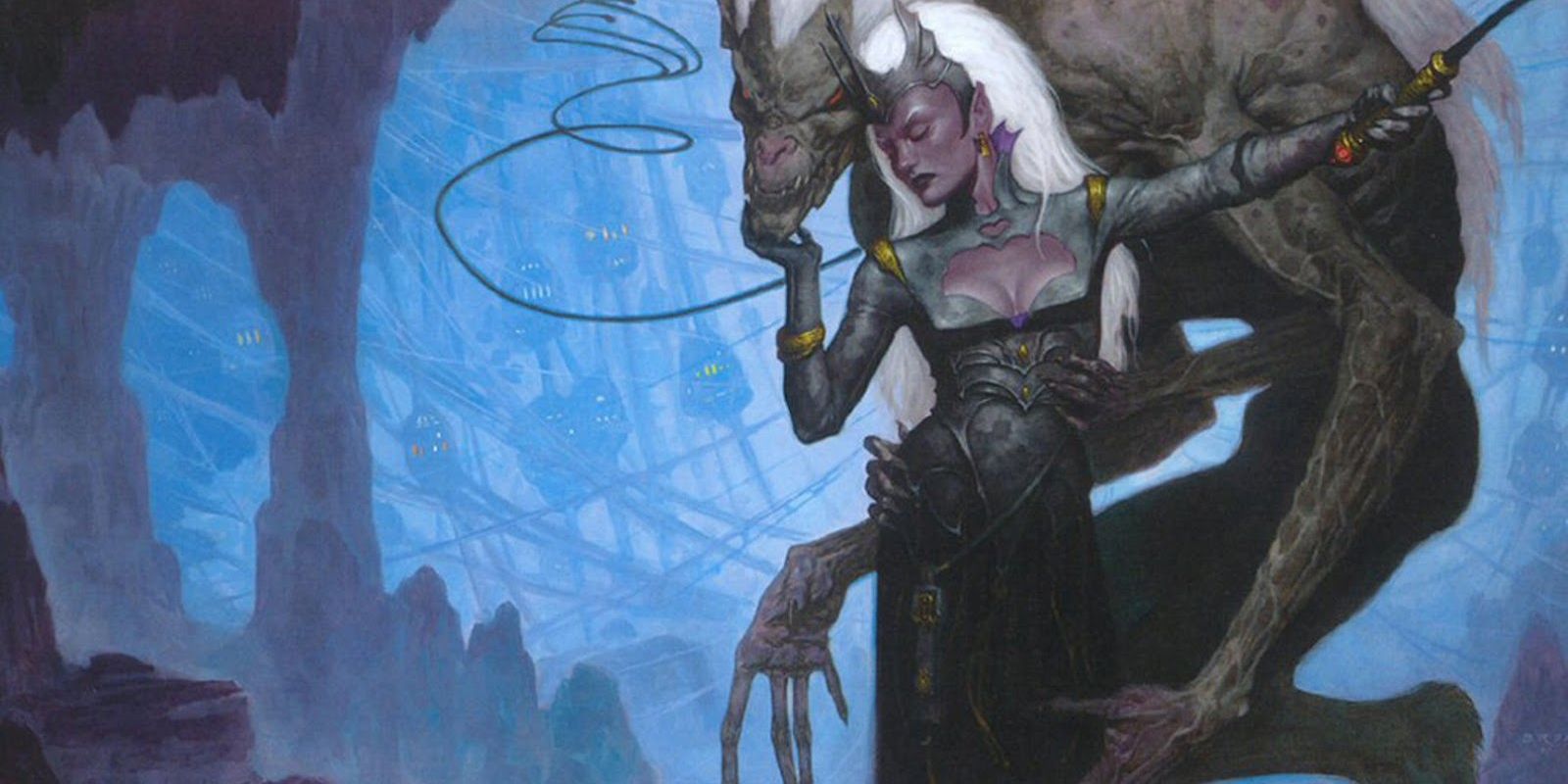Elegant, arcane and blessed with an affinity for magic, elves are one of Dungeon & Dragons most beloved character races. Building an elf may seem like a daunting task. Not only are they notoriously elusive, the sheer number of choices can be overwhelming. Luckily, Fifth Edition has consolidated the many types into three distinct categories that help fans better understand these mysterious beings.
Elves are known for their chaotic nature and belief in self-expression. No matter the circumstance, they remain free spirits. They possess an incredibly long lifespan, giving them adequate time to hone their skill of choice. However, their long, slow lives also leave them susceptible to grief. They may come across as aloof, but despite their outward coolness, elves feel things deeply. Their range of emotions is more extreme than that of humans and other creatures, meaning players who choose to build a character of this race have a lot to work with.
High Elf
The high elves were the first to explore all realms of the world, and their achievements have been immense. Players can draw inspiration from great nations of the past, such as Ancient Greece or China during the time of Confucius. Of all three types, the high elf is most likely to befriend humans. While haughty at times, they are also diplomatic, and players of this variety can consider forming alliances with other races. In general, elves are slow to make friends but once they do, they are loyal until the end -- which makes them great allies and deadly enemies.
If not for their ears, many high elves could pass as exceptionally beautiful humans. High elves are tall and slim with a variety of features depending on their tribe. For instance, gray elves have pale skin with silver or gold hair and amber or violet eyes, while sun elves have bronzed skin with gold, copper or black hair and green or gold eyes.
High elves work well with the chaotic good alignment. They are well-read and cultured, so players should immerse these characters in art, poetry and magic. They also get to choose an additional language, since high elves are bilingual. When calculating ability scores, they receive a +1 Intelligence. According to the Player’s Handbook, high elves are skilled using the longsword, shortsword, shortbow and longbow. This makes Bladesinger, a Wizard subclass that blends swordplay and dance, is a great choice for a high elf.
Wood Elf
Pagan magic, ancestor worship and enchanted forests come to mind when describing a wood elf. The founding members cut ties with their high elf kin and forged a new life in the Athel Loren, the forest between the Empire and Bretonnia. They are highly reclusive, using their time to maintain and protect the forest. Players often choose to highlight their fey characteristics, drawing inspiration from indigenous cultures. Appearance wise, wood elves have coppery skin, red, brown or black hair and green, brown or hazel eyes.
Wood elves possess the same skill in weaponry as high elves. They are good on their feet and possess the Mask of the Wild, giving them the ability to conceal themselves without much cover. They qualify for +1 Wisdom in their ability, and their alignment is usually chaotic neutral. Ranger is an excellent class for a wood elf since their primary motivation is to protect the forest.
Drow
While all elven groups have experienced a form of exile, no group has felt this as intensely as the drow. Banished to the Underdark, these elves live with a sense of being hated. Drow may resemble wood elves in their feral nature, but while wood elves may practice necromancy, drow may perform a deadly sacrifice. Drow have been known to kidnap innocents for their rituals, leading many to regard them as demon worshippers. However, not all drow live this way. They are the most feared and misunderstood type of elf, often drawn with dark blue or gray skin, white hair and glowing red eyes.
As dwellers of the Underdark, drow are an excellent choice for players that want to build a villain. They are also an interesting choice for the chaotic or true neutral alignments. They share striking similarities to the Morlocks, the underworld antagonists of H.G Wells' novel The Time Machine. Like Morlocks, they possess superior darkvision but have a sensitivity to sunlight. Unlike the Morlocks, drows possess beauty and sophistication of culture.
Drow generally have very powerful magical abilities. Players can use the Dancing Lights cantrip from the start, Faerie Fire by third level and Darkness by fifth level. Drow also receive a +1 Charisma, which is also their spellcasting ability. Recommended classes include an arch mage with centuries of spell practice or a Bard who uses their charm to lure prey.




